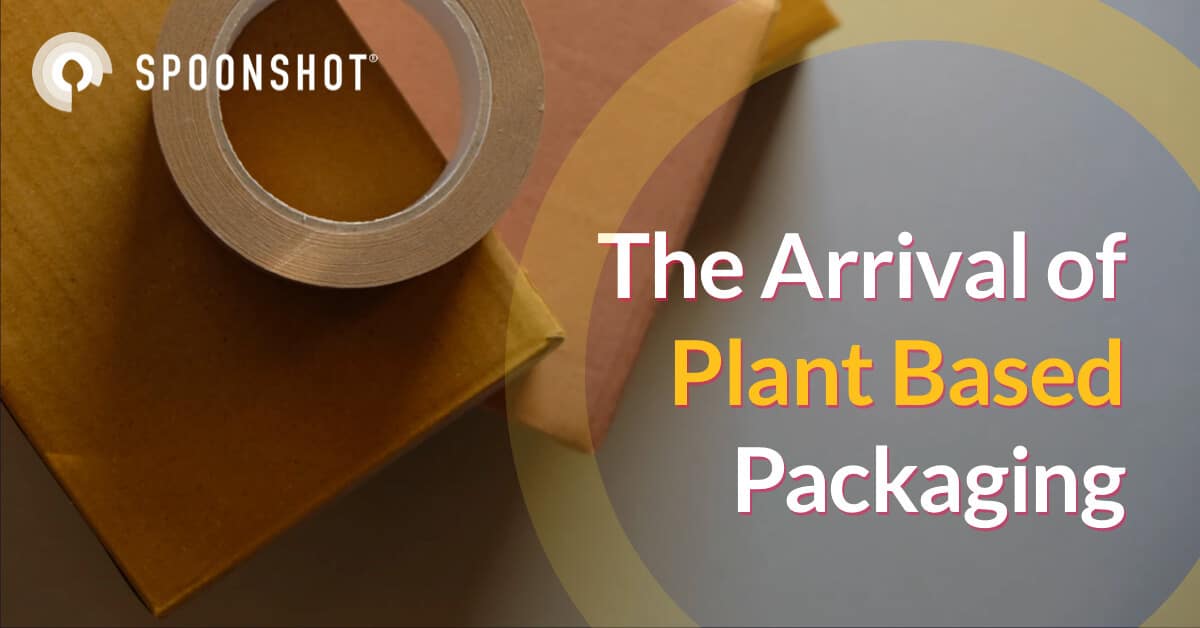
One of the very many problems made worse by the pandemic is the issue of plastic waste. Before this crisis unfolded, the world was making some headway in terms of solutions to tackle the amount of plastic waste we generate, particularly single-use plastic – with consumer participation and encouragement. Unfortunately, and perhaps understandably, plastic pollution and its environmental impact have taken a backseat to scares over safety and hygiene.
However, there is good news.
Last week, Bacardi announced that it will be shifting completely to 100% biodegradable plastic bottles by 2023. This is expected to get rid of 80 million plastic bottles that the company currently uses. The new bottles are said to be made from natural oils derived from seeds including palm, canola, and soy – and will biodegrade after just 18 months (normal plastic takes upwards of 400 years to decompose!).
Also Read: Plants Based Food Data
This brings us to the future of packaging and plastic – plant based packaging. This relatively new but growing plastic alternative trend in the packaging world is garnering significant interest, much like its meat alternative cousin.
Interest in plant based packaging nearly doubled (96.4%) between 2018 and 2019, but saw a bit of a downward spiral this year, thanks to the pandemic.
Source: Spoonshot
Here are a few interesting innovations in the plant-based packaging space, and 5 plant based packaging materials that show promise in replacing plastic.
1. Seaweed
This is a highly eco-friendly alternative to starch-based packaging materials. It doesn’t need land or time to grow; some varieties of seaweed can grow by 1 meter per day. It doesn’t need fertilizer or water.
UK-based Notpla uses a plastic-like casing made from seaweed that can biodegrade within 4-6 weeks or can even just be eaten. This material can be used as packaging for sauces and beverages. The company also has other types of containers in the works.
Source: Notpla
In an answer to single-use straws, US-based Loliware offers straws made from seaweed that are ocean-safe and decompose in just hours. Seaweed is definitely is slowly but surely becoming the preferred plant based packaging material for many brands.
Source: Loliware
2. Coffee Grounds
Scientists in Yokohama National University, Japan, have used spent coffee grounds to create a bioplastic which can definitely be categorized as a plant based packaging alternative. They extracted cellulose nano-fibers from the spent grounds and used these as the base for the biodegradable plastic resins.
This is a promising method since our coffee obsession produces more than 6 million tons of coffee grounds, much of which end up in landfills, according to the International Coffee Organization. Further studies are ongoing to come up with a commercially viable product.
3. Sugarcane
Sugarcane pulp or bagasse has become a popular option as a material for plant-based packaging. It has chemical properties similar to plastic and thus makes a pretty good eco-friendly alternative to make bags, takeaway containers, and straws. In addition, bagasse-based packaging holds up well to hot and cold items and can be toxin-free.
Numi Tea has introduced a plant-based, flexible film tea bag wrapper that features a non-GMO PLA (polylactic acid) layer made from renewable sugarcane.
Source: Numi Tea
4. Coconut Husk
The fiber in coconut husk is rich in lignin, a material that is naturally burn-resistant. This makes it a good option for packaging. The biodegradable coconut husk can be easily molded using organic adhesive into customized cartons to safely transport fruits, vegetables, and eggs, which need cushioning during transportation.
5. Mushroom
The outer shell and roots of a mushroom contain mycelia, which when combined with certain natural ingredients bind together and can be molded to form solid structures. This mushroom-based packaging can biodegrade in a garden within weeks.
Some of these plant-based packaging materials have been around for a while, but some are still being studied. Whatever their stage of innovation, it has been proven that there are feasible solutions to our plastic problem. Once we’re past the pandemic, this is going to become a major consumer concern again. And make no mistake, people are concerned: Instagram shows well over 3 million posts linked to #plasticfree and over 2.6 million linked to #plastic.
Sure, for companies, as with all new things, it will be costly initially, but often that sorts itself out with scale. What may be more costly for companies is ignoring consumer sentiment about their impact on the environment.
Did you get a chance to read our blog post on the top predictions for food trends 2022? We’ve nailed 9 of them and some of them are already coming true! If you haven’t read it yet, check it out.
Stay safe. Have a wonderful, plastic-free Halloween!



Leave a Reply